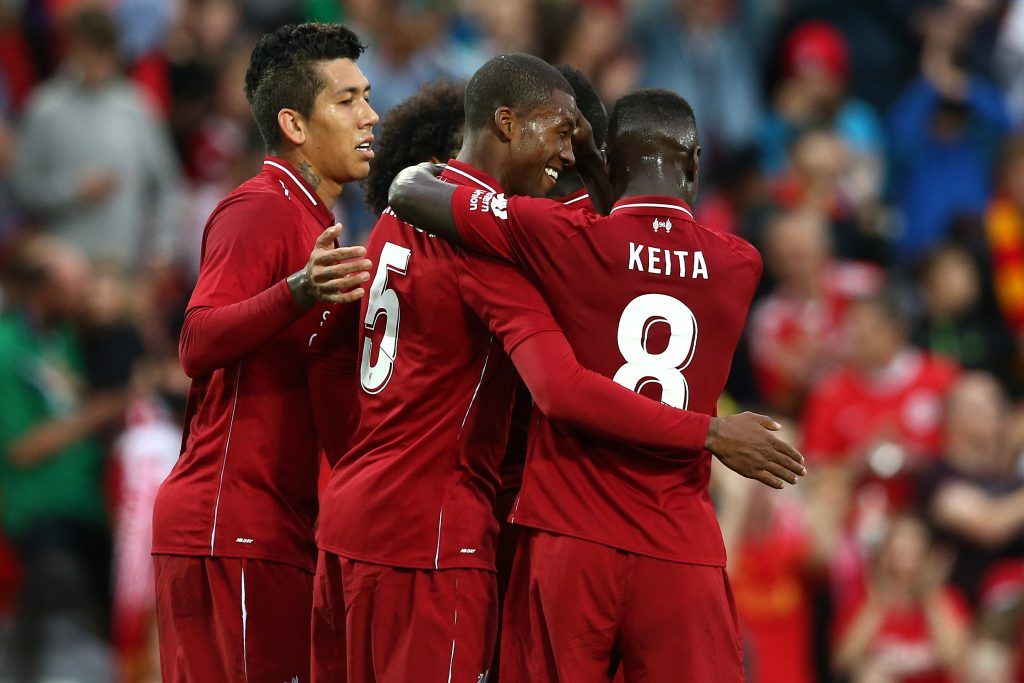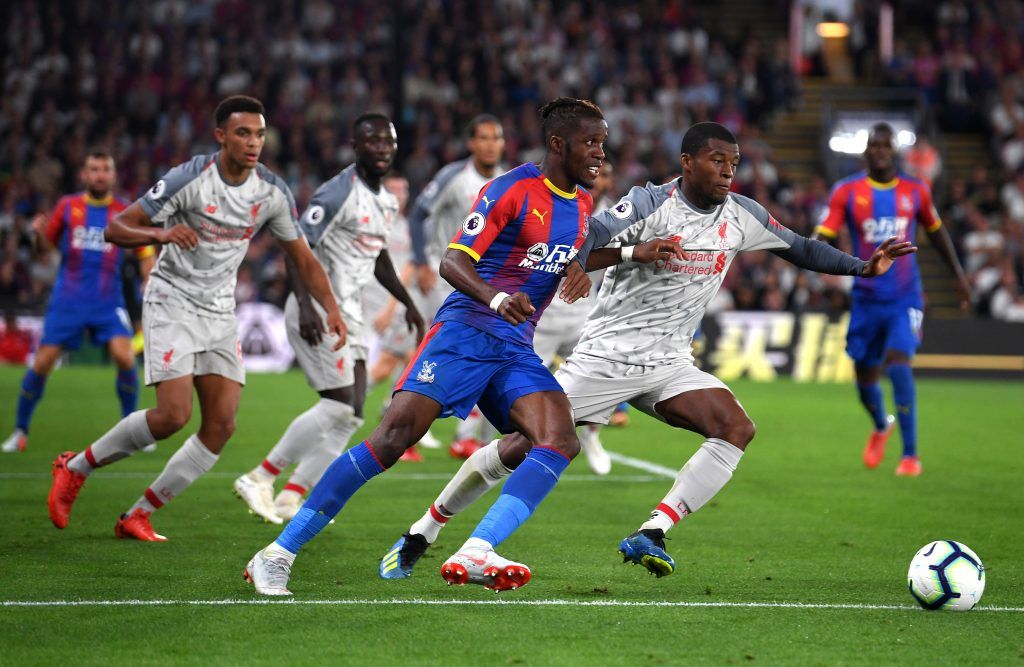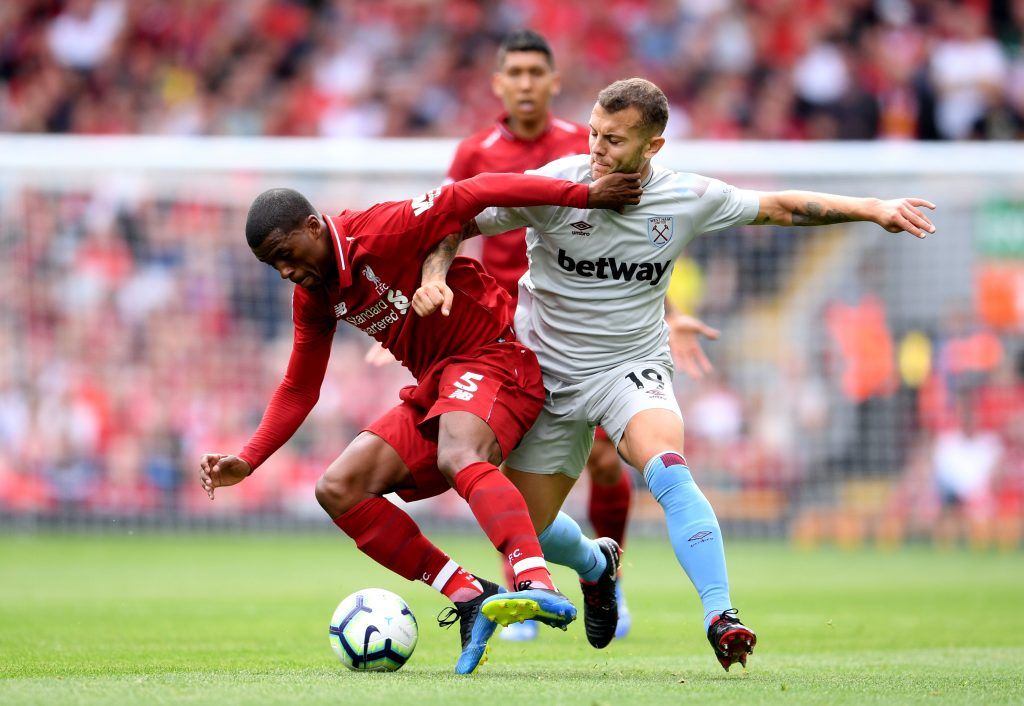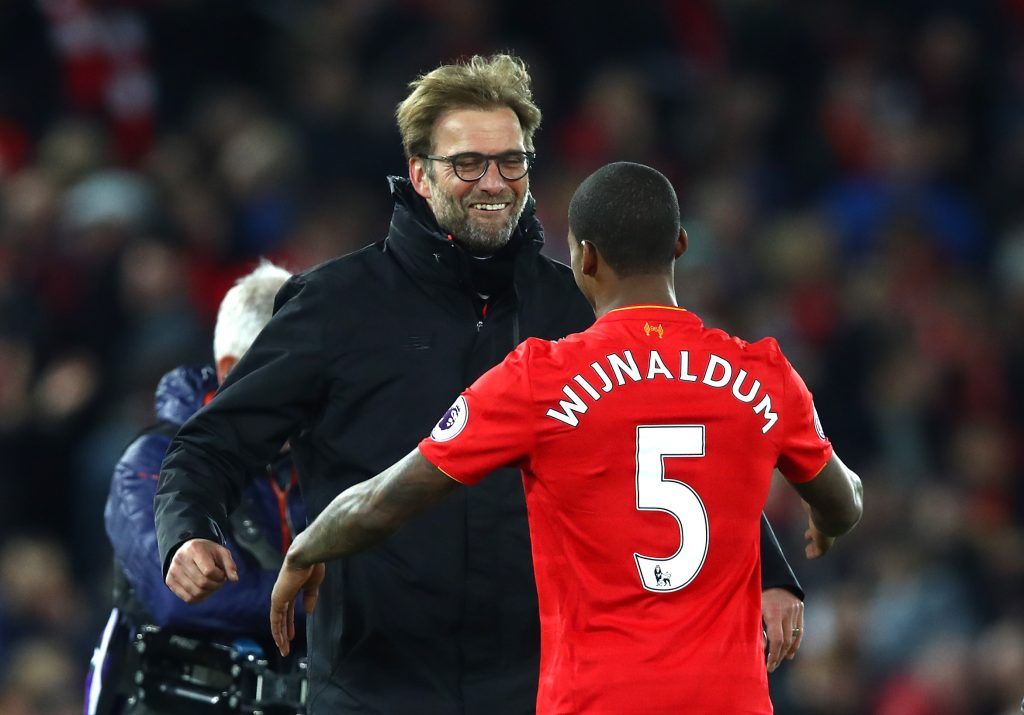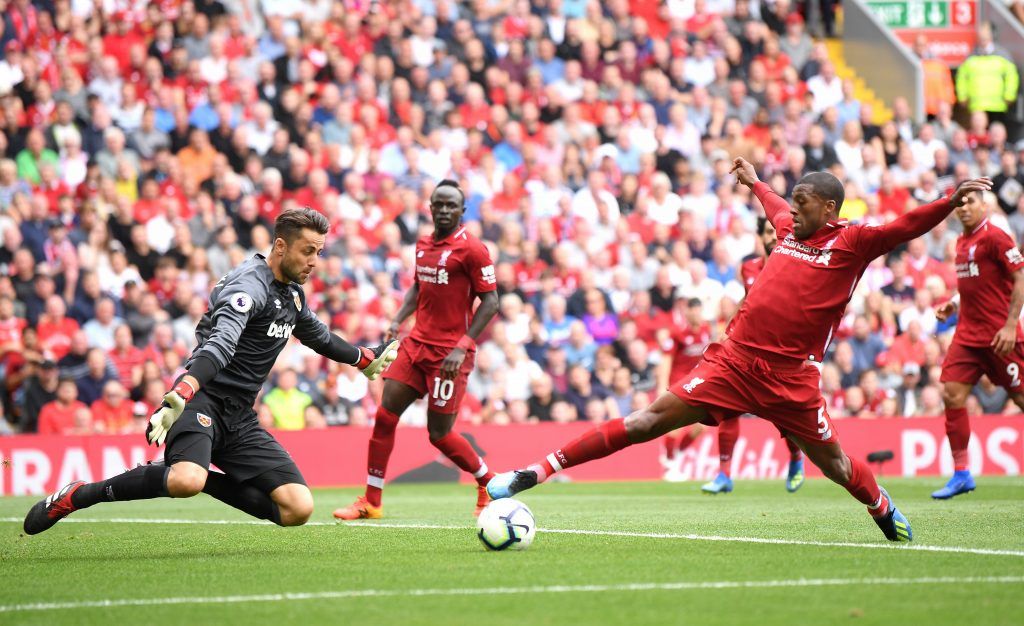In early 2017, a few players were in the canteen at Melwood discussing which team-mate they felt had the makings of a future manager.
Gini Wijnaldum was the overwhelming response on account of his tactical intelligence, his ability to shape-shift according to what Jurgen Klopp requested, and the analytical way in which he could dissect a display.
By the end of that year, the Netherlands international – bought as a playmaker from Newcastle United, but operating as a defensively diligent left midfielder for the Reds – would line up in a back three during a 5-1 victory at Brighton.
The positional switch at the Amex materialised from an injury crisis and the shape – Wijnaldum to the left of Dejan Lovren with Emre Can as the right centre-back – was tried out in the final 20 minutes of training on the eve of the encounter.
The 27-year-old only knew he would be starting in defence when Klopp announced the 11 on matchday and told him as much, yet he adjusted and executed.
“Just throw him in goal next,” laughed the same group that touted Wijnaldum as a future face in the dugout. “Gini, where can’t you play?”
With Wijnaldum now excelling at the base of Liverpool’s midfield this season, that’s a great question.
The N0.6 role is the seventh he has undertaken since his days at Sparta Rotterdam’s academy.
Gini started off as a centre-half before his eighth birthday, before functioning as a right full-back at Under-11/12 level.
The first person to view Wijnaldum as a midfielder was coach Cyril Helstone, and until he moved on and made his debut in the first-team at Feyenoord, that is where the Schiemond native was stationed.
In his third season at De Kuip, the club’s new manager Gertjan Verbeek swapped Gini from the centre of the pitch to the right wing, largely due to his dribbling wizardry.
“I performed well there so they didn’t want to move me out, but in my mind, I always believed I was better in midfield,” Wijnaldum previously explained.
“I was just happy to be playing, though, because I was young. When you’re still developing, getting games is so important. I learnt a lot playing on the wing and now I understand what the guys in those positions want from me.
“But when I got older, I knew I wanted to be a midfielder. I’ve had to have discussions with my agent, managers, directors, chief executives to explain that I am a midfielder, especially at Feyenoord.”
In his final campaign there before joining PSV, Wijnaldum would morph into a No.10 under the guidance of Mario Been – a duty he relished and was incredibly effective at even at Newcastle.
He was deployed as a second striker at times too, and could not have envisioned being turned into one of the No.8s in a three-man midfield following his £25 million transfer from Tyneside to Anfield.
The adaptation from a goalscorer and creator to being Liverpool’s golden thread – their link man – suited Wijnaldum more than anyone who hasn’t worked with him could have predicted.
“A lot of people see me differently, a lot didn’t think I could play the way I am,” he admitted.
“They thought I was just an attack-minded player, the dribbler or the goalscorer without the discipline to defend and check on the movements of my team-mates.
“I think I’ve surprised many people because I’m showing I can still make the runs and get goals, but I’m regaining balls, keeping the rhythm in the passing, covering for those around me and getting assists – they’re seeing the complete version of me.”
Wijnaldum was instrumental during his first season at Liverpool – scoring goals against Manchester City, Chelsea, Arsenal and the vital opener against Middlesbrough to finish in the Champions League places on the final day of the campaign – but 2017-18 was more subdued.
Klopp held talks with the Dutchman imploring him to be more involved in matches, and with the introduction of Naby Keita and Fabinho to the squad this summer, it was understandable that many wrote Wijnaldum out of the starting XI.
However, the Reds boss selected him as the ‘quarterback’ in all three games, entrusting Gini with the responsibility of ensuring the side have a solid foundation both defensively and offensively.
Wijnaldum misplaced just one of his 76 passes in the 1-0 win over Brighton and his lowest passing accuracy thus far this season has been 91% at Crystal Palace, where he won 63% of his duels, made three tackles, a clearance and created a chance.
In the 4-0 victory over West Ham on the opening Premier League weekend, he had three shots as well as regained possession eight times.
The variety and awareness in his game has been appreciated by the manager. “Gini can switch from one mindset to the other and that is pretty good for us,” Klopp said.
“He’s a good footballer, but it is important that you have the kind of mindset that you can cool yourself down in different situations.”
Wijnaldum has allowed Liverpool to bed Fabinho in slowly and not rush Jordan Henderson back into the XI following his World Cup exertions. Moreover, he carries out No.6 responsibilities in contrast to both, giving the manager more adaptability there.
“The connection point for everything,” who is closing in on a century of appearances for the Anfield side, has also guided new-boy Keita through games, while Joe Gomez and Virgil van Dijk have saluted his “football brain.”
Ironically, Wijnaldum had initially wanted to be a gymnast as a child. His blend of balance, flexibility, strength, agility, endurance and co-ordination is now cherished by Klopp.
When rotation becomes a necessity, the German will count his pliability as a massive advantage; he can rely on Gini to be a controller, the knitter, a ball carrier or an amalgamation of all those things.
Just so long as he never has to “throw him in goal next.”

